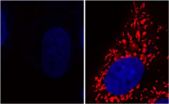(Press-News.org) CHICAGO (August 1, 2014)—The use of electronic reminders such as text messages, emails or voicemails is highly effective at getting surgical patients to adhere to a preadmission antiseptic showering regimen known to help reduce risk of surgical site infections (SSIs), according to a first-of-its-kind study published in the August issue of the Journal of the American College of Surgeons.
Each year approximately 400,000 SSIs occur and lead to a death rate approaching nearly 100,000 according to data sources cited by study authors. To help reduce the risk of these dangerous infections, clinicians recommend that surgical patients take antiseptic showers with chlorhexidine gluconate (CHG) 24 to 48 hours before admission. CHG is beneficial because it reduces the microbial burden on the surface of the skin and, thereby, the risk of intraoperative wound contamination.
"SSI risk reduction really involves a holistic approach and the preadmission shower is an important component of that comprehensive prevention program. So, if a patient excludes one of the components in this process, the benefit of the surgical care could be affected," said lead study author Charles E. Edmiston, PhD, professor of surgery and hospital epidemiologist, Medical College of Wisconsin, Milwaukee.
"In general, getting patients to comply with this preadmission cleansing strategy is a challenge throughout health care," Dr. Edmiston said. "While patients want to be compliant, they will often forget to fulfill this preadmission requirement. So, that's why we looked to new technology for a solution. When you use a prompt like texting or emailing, you make the patient an intimate partner in the health care process."
For the study, researchers recruited 80 healthy volunteers who were randomized to one of four skin-antiseptic showering groups. Electronic alerts were sent as voicemails, text messages or emails, with text messages being the most popular method (80%) among volunteers. Volunteers were randomized to either taking two (Group A) or three showers (Group B). Group A1 and group B1 was prompted to shower by an electronic alert reminder, while Groups A2 and B2 did not receive an electronic prompt.
The participants were instructed to return to the laboratory within three hours after their last shower to have their skin-surface concentrations of CHG analyzed at five separate sites on their bodies. Researchers measured compliance by looking at skin-surface concentrations of CHG in all 80 individuals who were assigned to take the antiseptic showers.
The analysis showed that CHG skin-surface concentrations were significantly higher in groups A1 and B1 (patients who received alerts) compared with groups A2 and B2 (patients who did not get reminders). In a comparative analysis between groups A1 and A2, there was a 66 percent reduction in the composite mean concentration of CHG on the skin surface in patients who were not alerted to shower (group A2) compared with those who received electronic reminders (group A1).
Furthermore, in the groups that showered three times, there was a 67 percent reduction in the composite mean skin-surface concentration of CHG in patients who were not alerted before showering (group B2) compared with those who received electronic alerts (group B1).
Thus, the researchers conclude that the patients who did not receive digital communications reminding them to shower were significantly less compliant with preadmission orders compared with those who received the electronic reminders. These study findings have great ramifications not only for this preadmission strategy and its potential impact on SSI risk reduction, but also for other preadmission orders.
"I think a study like this provides us with a tremendous opportunity to empower patients because it clearly makes them an intimate partner in the whole health care experience," Dr. Edmiston said. "It's reminding them that they are not a passive player but rather an active participant in an important risk-reduction strategy that if successfully completed can contribute to an improved clinical outcome."
Ultimately, the researchers are striving to develop a standardized process wherein surgical patients take preadmission showers in a methodical way, resulting in an overall improvement in outcomes. Moving forward, additional research is needed to determine if electronic alert reminders and better compliance translate into lower SSI rates, Dr. Edmiston concluded.
INFORMATION:
Other participants in the study include Candace J. Krepel, MS, Sarah E. Edmiston, MEd; Maureen Spencer, MEd; Cheong Lee, MD; Kellie R. Brown, MD, FACS; Brian D. Lewis, MD, FACS; Peter J. Rossi, MD, FACS; Michael Malinowski, MD; and Gary Seabrook, MD, FACS.
This study was supported in part by a grant to Dr. Edmiston from CareFusion. All other authors have nothing to disclose.
Citation: Journal of the American College of Surgeons, August 2014: Vol. 219 (2) 256-264.
About the American College of Surgeons
The American College of Surgeons is a scientific and educational organization of sur-geons that was founded in 1913 to raise the standards of surgical practice and improve the quality of care for surgical patients. The College is dedicated to the ethical and competent practice of surgery. Its achievements have significantly influenced the course of scientific surgery in America and have established it as an important advocate for all surgical patients. The College has more than 79,000 members and is the largest organization of surgeons in the world. For more information, visit http://www.facs.org (.)
Electronic reminders can help patients prevent surgical site infections
New Journal of the American College of Surgeons study reports on a simple digital messaging system that significantly increases patient compliance with a preadmission showering protocol, an important component of surgical site infection prevention
2014-08-01
ELSE PRESS RELEASES FROM THIS DATE:
Potential treatment and prevention of Parkinson's disease
2014-08-01
This news release is available in German.
Parkinson's disease affects neurons in the Substantia nigra brain region – their mitochondrial activity ceases and the cells die. Researchers at the Max Planck Institute of Molecular Cell Biology and Genetics show that supplying D-lactate or glycolate, two products of the gene DJ-1, can stop and even counteract this process: Adding the substances to cultured HeLa cells and to cells of the nematode C. elegans restored the activity of mitochondria and prevented the degeneration of neurons. They also showed that the two substances ...
NASA eyes powerful bands of thunderstorms in newborn Tropical Storm Iselle
2014-08-01
Tropical Storm Iselle was born in the Eastern Pacific Ocean soon after NASA's Aqua satellite gathered infrared imagery on the storm that showed powerful thunderstorms wrapping into developing storm's center. Iselle is not close enough to land to cause any watches or warnings.
The Atmospheric Infrared Sounder or AIRS instrument aboard NASA's Aqua satellite passed over System 95E on July 31 at 5:23 p.m. EDT from gathered infrared data before it became Tropical Storm Iselle. The data was made into a false-colored image at NASA's Jet Propulsion Laboratory in Pasadena, California. ...
Heavy metals and hydroelectricity
2014-08-01
Boulder, Colorado, USA – Hydraulic engineering is increasingly relied on for hydroelectricity generation. However, redirecting stream flow can yield unintended consequences. In the August 2014 issue of GSA Today, Donald Rodbell of Union College-Schenectady and coauthors from the U.S. and Peru document the wholesale contamination of the Lake Junín National Reserve by acid mine drainage from the Cerro de Pasco mining district.
According to the World Bank, about 60% of Peru's electricity is generated by hydropower, which during the dry season relies heavily on glacial meltwater ...
Scripps Research Institute scientists find new calorie-burning switch in brown fat
2014-08-01
LA JOLLA, CA—August 1, 2014—Biologists at The Scripps Research Institute (TSRI) have identified a signaling pathway that switches on a powerful calorie-burning process in brown fat cells.
The study, which is reported in this week's online Early Edition of the Proceedings of the National Academy of Sciences, sheds light on a process known as "brown fat thermogenesis," which is of great interest to medical researchers because it naturally stimulates weight loss and may also protect against diabetes.
"This finding offers new possibilities for the therapeutic activation ...
New mothers still excessively sleepy after 4 months: QUT study
2014-08-01
New mums are being urged to be cautious about returning to work too quickly, after a QUT study found one in two were still excessively sleepy four months after giving birth.
Dr Ashleigh Filtness, from QUT's Centre for Accident Research & Road Safety - Queensland (CARRS-Q), studied the sleep patterns and tiredness of postpartum mums and found despite new mums recording stable night sleep times at 18 weeks, they continued to report being excessively tired.
The CARRS-Q study, published in PLOS ONE, followed 33 healthy new mums who recorded their postpartum sleep patterns ...
Effect of microenvironment modulation on stem cell therapy for spinal cord injury pain
2014-08-01
Spinal cord injury (SCI) currently ranks second after mental retardation among neurological disorders in terms of cost to society. Pain is a debilitating consequence of SCI related to the nature of the lesion, neurological structures damaged, and secondary pathophysiological changes of surviving tissues1. Approximately two-thirds of persons who have sustained SCI experience clinically significant pain after injury, of whom one-third have severe pain2, 3. Post-SCI pain can increase with time and is often refractory to conventional treatment approaches4. Over the past decade, ...
Acrolein as a novel therapeutic target for motor and sensory deficits in spinal cord injury
2014-08-01
Acrolein, a highly reactive unsaturated aldehyde, has been shown to play a major role in the secondary injury by contributing significantly to both motor and sensory deficits. Prof. Riyi Shi, who comes from University of Purdue in USA will highlight the recent developments in the understanding of the mechanisms of acrolein in motor and sensory dysfunction in animal models of spinal cord injury, and will also discuss the therapeutic benefits of using acrolein scavengers to attenuate acrolein-mediated neuronal damage following spinal cord injury. The relevant study has been ...
Recent advances in stem cell biology
2014-08-01
Advances in stem cell research will provide enormous opportunities for both biological and future clinical applications. Basically, stem cells could replicate any other cells in the body, offering immense hope of curing Alzheimer's disease, repairing damaged spinal cords, treating kidney, liver and lung diseases and making damaged hearts whole. The potential for profit is staggering. Prof. Jinhui Chen from Indiana University in USA considered that this field of research still faces myriad biological, ethical, legal, political, and financial challenges. The eventual resolution ...
Developmental regulation of important plant phloem components discovered
2014-08-01
Sieve elements are a key component of phloem, the conductive tissue through which plants transport carbohydrates and a wide range of signalling molecules. Elongated cylindrical cells are capped at one end by a sieve plate and arranged end-to-end to form sieve tubes which in turn form a network throughout a plant's body.
"Sieve elements are very special cells which play an important role in carbon sequestration, yet so far very little has been known about their differentiation," says Professor Ykä Helariutta from the Institute of Biotechnology, University of Helsinki, ...
Plastic surgeons or nurses: Who are the better injectors?
2014-08-01
In recent years, minimally invasive aesthetic injectable procedures have grown in popularity as more and more men and women are seeking age-defying treatments. As Botulinum toxin – generally known as BOTOX® – use has increased, a growing number of nonaesthetic health professionals have emerged to perform procedures utilizing this and other injectables. Kevin Small, MD and Henry M. Spinelli, MD from the Division of Plastic Surgery Presbyterian Hospital in New York and Kathleen M. Kelly, MD from Columbia University in New York have assessed the capability of various providers ...
LAST 30 PRESS RELEASES:
The perfect plastic? Plant-based, fully saltwater degradable, zero microplastics
Bias in data may be blocking AI’s potential to combat antibiotic resistance
Article-level metrics would provide more recognition to most researchers than journal-level metrics
Satiety’s little helper: Protein that supports appetite regulating protein identified
UF dives deep into predicting storm damage with computer models
A stormy ocean voyage yields insights on the global carbon cycle
Scientists identify first non-coding gene that controls cell size
Demonstration of altermagnetism in RuO₂ thin films -- A new magnetic material for the AI era
Penn researchers awarded $25M to conduct trial using smartphones to fight heart disease
PCORI awards funding for new patient-centered healthcare research
Exploring the origins of the universe: 145 low-noise amplifiers complete ALMA telescopes
Empress cicada wings help illuminate molecular structure
Using sound waves to detect helium
Time burden in patients with metastatic breast and ovarian cancer from clinic and home demands
Researchers discover bias in AI models that analyze pathology samples
Scientists ID potential way to prevent brain injuries from triggering Alzheimer's
MASTER 2nd Open Call: Execution period kick-off
Algae for health in food and pharma
Advanced microrobots driven by acoustic and magnetic fields for biomedical applications
Chicago health information leader recognized for raising CPR readiness and blood pressure awareness
The Intimate Animal, a new book from Kinsey Institute Executive Director Dr. Justin Garcia
When blue-collar workers lose union protection, they try self-employment
New video dataset to advance AI for health care
MEA-based graph deviation network for early autism syndrome signatures in human forebrain organoids
New modeling approach sheds light on rare gut disease
Study documents potentially hazardous flame retardants in firefighter gear
Can certain bacteria regulate aging of the immune system and its related alterations?
AI model helps diagnose often undetected heart disease from simple EKG
There are fewer online trolls than people think
Cell membrane fluctuations produce electricity
[Press-News.org] Electronic reminders can help patients prevent surgical site infectionsNew Journal of the American College of Surgeons study reports on a simple digital messaging system that significantly increases patient compliance with a preadmission showering protocol, an important component of surgical site infection prevention




